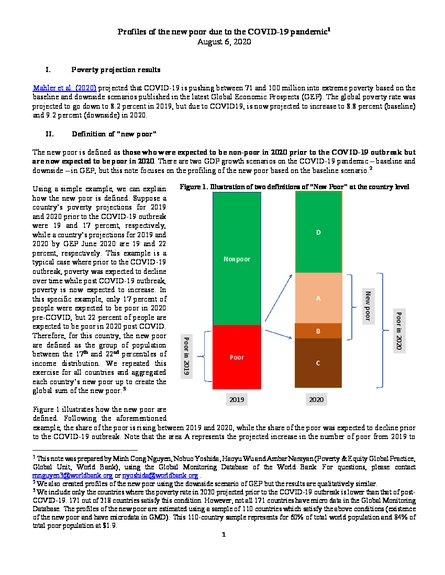
The new poor is defined as those who were expected to be non-poor in 2020 prior to the COVID-19 outbreak but are now expected to be poor in 2020. There are two GDP growth scenarios on the COVID-19 pandemic – baseline and downside – in GEP, but this note focuses on the profiling of the new poor based on the baseline scenario.
Using a simple example, we can explain how the new poor is defined. Suppose a country’s poverty projections for 2019 and 2020 prior to the COVID-19 outbreak were 19 and 17 percent, respectively, while a country’s projections for 2019 and 2020 by GEP June 2020 are 19 and 22 percent, respectively. This example is a typical case where prior to the COVID-19 outbreak, poverty was expected to decline over time while post COVID-19 outbreak, poverty is now expected to increase. In this specific example, only 17 percent of people were expected to be poor in 2020 pre-COVID, but 22 percent of people are expected to be poor in 2020 post COVID. Therefore, for this country, the new poor are defined as the group of population between the 17th and 22nd percentiles of income distribution. We repeated this exercise for all countries and aggregated each country’s new poor up to create the global sum of the new poor.